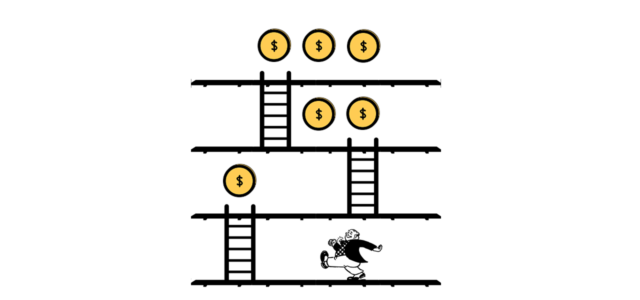In-house innovation teams and centers of excellence (COEs) became the norm for progressive organizations in 2019. As modernization continues, in-house innovation teams will mature and scale with external support to create, nurture and facilitate new ideas.
In 2020, modernization will occur by deploying both inside out and outside in models to accelerate and produce organizational results.
Three 2020 Core Modernization Disciplines – Varying Levels of Maturity.
Technology. For technical teams, the output of successful innovation is the creation of best practices. This means iteratively improving productivity, performance and speed through modernization of the technologies utilized. Currency of the strategic asset – technology – will enable growth and the ability of the enterprise to compete and thrive.
- There are several concepts that teams increasingly look toward to modernize and simplify development. Micro-services and modern front-ends are popular candidates to help make sense of development efficiency, while containerization and multi-tenant architectures offer hosting benefits.
- Technology organizations require talent that are on board with the notion of creating, iterating and evolving, as a matter of practice. Innovation and strategy require a fundamental shift in mindset in order to translate to best practices and tactics. Culture will become the glue that facilitates the change in successful organizations.
- Technology stakeholders must own the application modernization and plan for a currency in a technology landscape that is ever-evolving. Remaining forward-friendly requires adaptation to changing trends and a willingness to pivot while also being disciplined in the face of change.
Business and technology leadership must be transparent and collaborate “in the sunlight.” Technical direction must permeate and become part of business decision-making.
Customer experience. Creating a value system that equates the demand for superior user experience to the requirement for a more future-friendly technical architecture is a core challenge for organizations and a matter of survival.
- Design thinking prescribes utilizing creativity and design principles at a business level to influence strategy and innovation. Ideation and collaboration across multi-disciplinary teams that are broader than just designers will help to identify new ways to serve and support communication and collaboration and uncover customer needs, desires and behaviors.
- Design thinking in truly progressive enterprises will mature to become a core discipline that bolsters strategy and corporate direction. As organizations authentically empathize with their customers and find the path to incorporate emotion into their offerings and solutions, experimentation and failing fast will evolve into patterns, methods and constructs that inspire the team creatively.
- User experience, while focused on usability, accessibility, information architecture and interaction design across application interfaces, is part of a much more holistic tapestry of experiences, the overall customer experience (CX). As customer experience and service-oriented business models become a stronger differentiator for organizations, the user experience of web applications becomes more important as it often represents the front line when it comes to customer interactions. Employee experience (EX) must also become a key focal point in the B2B evolution in 2020.
User experience should be contextual, performant, and accessible.
Data. Knowledge of data and how to leverage it is imperative to compete and succeed as a business. Data gathering and data management functions are growing larger and increasingly important as more and more data is collected and stored. Insights and data alone will not transform anything. Converting findings into actionable ideas demands sustained data practices and eventually implementation and internal competency.
- The reliance on IT to access critical business intelligence will lessen in time – plan to be ready. As tools, employee capabilities, and internal team competencies increase, the reliance on the data expert – externally or internally – will decrease.
- Move your organization from being a “data janitor” to a “data analyst.” Learn the science of data, and begin the journey to educate your team about why data is important, where it lives, and how it can be harnessed to inform business decision-making and outcomes.
Take steps to make data fluency an organizational competence.
Three Recommendations for 2020.
- Technology leadership need to create, revisit and update the technology architecture and blueprint to ensure planning aligns with changes in the technology landscape. Strategy is underpinned by a set of effective tactics that can be repeated and honed. Examples include emerging practices like micro-services, multi-tenancy, and containerization/the cloud. New directions are not the hammer for every nail, so a sound technology model based in a view of people, process, tools, technology and customer experience (the business strategy) are essential.
- Make design thinking and data first-class citizens in your enterprise, and educate your executive team and organization on the value. Foster open and transparent communication between the CMO, CIO and executive team in 2020 to understand the tradeoffs between pace, user experience, data-driven insights, and technical architecture adherence and integrity.
- Make reskilling an essential competency in your employee career progression to compete in today’s ever-changing corporate environment. The Achilles heel of every organization is complacency and contentment. In today’s business environment in which employees must be forward-friendly and learning the next evolution of a particular competency, providing a means to achieve and maintain knowledge currency and proper application to the business are mandatory.
Closing Remarks
Individuals and organizations need to engage and become proficient in new areas and tactics to succeed. This includes having a knowledge basis in technology, data, analytics, digital communications, innovation and leadership. Investing in the skills of the employees and competencies and infrastructure of organizations is essential to forward compatibility with the marketplace.
Leadership at the top and across organizations feels the tension inherent in the lethargy and lack of momentum caused by inaction. There is also difficulty in the number of axes along which disruption is occurring – technology, devices, customer experience, social communications, telecommunications, hardware and software, among others.
Change does not happen without leadership. Executives, managers, and future leaders in organizations must catalyze the change in order to effect digital enablement.
Solutions will come from both within organizations and through relationships to service needed expertise. Being honest with yourself as an individual or organization and recognizing where the gaps exist informs the future action plan. Going forward, growing internal skills through ongoing education and partnering for adjacent needs and competencies will be the norm in the service economy.
Disruption or change is accelerating and is here to stay. Defining an approach that embraces transparency and rapid action will lead to sustainability and a healthy future, both for individuals and organizations looking to stay relevant.
Article by channel:
Everything you need to know about Digital Transformation
The best articles, news and events direct to your inbox
Read more articles tagged: Design Thinking, Featured, Innovation







